Yulong Audio. Ever heard of them? If you’re active at HeadFi, chances are you probably have. If you don’t participate on that forum then you may not have heard much about this plucky little company. Based in China, Yulong is a great example of an audiophile success story. Yulong (the man himself) was working as an engineer in the telecom industry, while dabbling in audio design – a hobby of his from high school. Eventually he took the step which very few DIYers are bold enough to try – quitting the day job and venturing into audio full time. The eponymous company launched in 2009 and has been growing steadily ever since, offering major bang for the buck with their small collection of DACs and headphone amps.
The original Yulong D100, and later the revised D100mkII, were my go-to recommendations for quite some time. People wanting a high-quality DAC for under $500 didn’t have to look much further. The D100 series got bonus points for having balanced outputs which were rather uncommon at the time. There was also a nice integrated headphone amp, making the device a very respectable all-in-one solution. I know a good many people who got their start with the D100 or D100mkII – some have since moved up to more expensive gear, while others remain thoroughly satisfied with what they have.
Yulong has since gone on to make other, more expensive designs, which tend to be highly competitive in their price class. But this vaguely “entry level” segment is very popular – in theory, if a brand gets your attention when you first start out, they might build loyalty and thus be a logical choice when you move up the ladder some day. So it’s crucial to have a popular entry into that field. The market is always changing and the D100 mkII is no longer “up to date” in terms of features. It still sounds great but has some obvious limitations – chiefly the 24/96 cap on the USB input. So here comes the D200 to replace its predecessor and bring Yulong’s “mainstream” model back up to the bleeding edge. Lest you think Yulong is just another play-it-by-ear designer fiddling with capacitors in his garage, take note – the designer uses a $10,000 Prism Sound dScope Series III (among other tools) and draws on his years of engineering experience to ensure his gear doesn’t just sound great, but also measures correspondingly well. This is one of the few companies who consistently provides detailed measurements for every product sold.
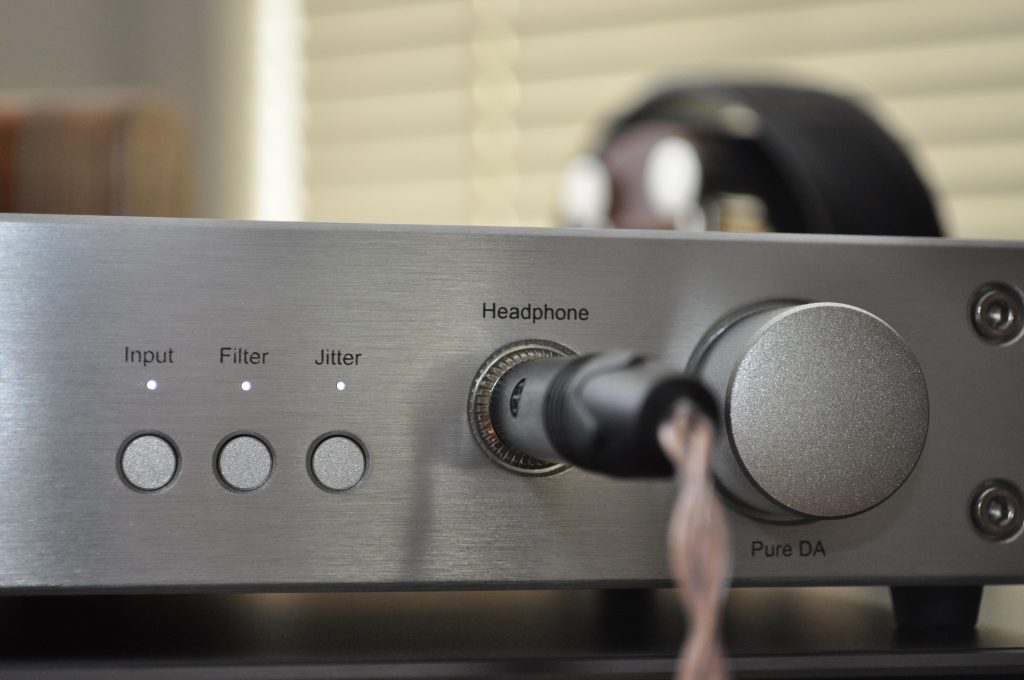
Think of a feature you might expect in a modern DAC, and the D200 probably has it. DSD capability? Yep. D200 handles DSD64 and DSD128. Modern asynchronous USB? Check. D200 uses an XMOS-based implementation capable of 32-bit/384kHz PCM as well as the previously mentioned DSD. High-tech Sabre chip? Sure. D200 gets an ES9016 as found in more expensive devices from the likes of B.M.C. and Simaudio. Headphone amp and balanced outputs remain on board, along with some new stuff like preamp capabilities and selectable digital filter. It’s like Yulong took their more expensive DA8 design, reduced and simplified a few things, and stuffed it in a modified D100 chassis. It really is quite a bit of DAC for the money.
The downside? Price has increased by a not-insignificant amount, climbing to $699. That’s over $200 more than the original was, and it puts D200 in a category which probably won’t qualify as “entry level” for most people. Granted, that’s a loaded term, and the original D100 was never dirt cheap either. But $479 for a do-it-all device seemed more palatable than $699. Yulong does risk alienating potential users with this price. Then again, I’m not sure they really plan to keep D200 as their most affordable option…. I have no inside knowledge on this, but I’d expect a lower priced model to appear one of these days, just to fill out their lineup. The old U100 compact USB DAC was released back with the original D100 and has never had a refresh, so I wouldn’t be at all surprised to see a U200 or something like that in the near future. But we’ll see.
As always, I recommend buyers in the North American region buy from Grant Fidelity. This not only saves you from the potential disaster of an eBay transaction gone awry, but also ensures great support should it ever be needed. Rachel from Grant Fidelity has a direct relationship with Yulong (the designer himself) and can provide translation for any questions or concerns. Add competitive pricing and I see no reason to take your chances anywhere else.
DESIGN
I made the comparison with Yulong’s flagship DA8 which sells for $1,299 – the closer we look at the D200, the more it confirms that idea. Even the PCB layout bears a very strong resemblance. Let’s cover the differences so we know what the cost cutting looks like and whether or not it matters to you. The nearly twice as expensive DA8 has superior opamps for the output stage, using the Analog Devices AD797. The D200 uses OP275 which is a less expensive option from the same firm. They both use the Texas Instruments OP1632 as part of the preamp buffer and both have the same proprietary Digital Signal Buffer section for cleaning up incoming data streams. The enclosure is obviously thicker and more heavy duty on the more expensive DA8, where the D200 uses a more basic (but not unattractive) case that hasn’t changed much from the D100. It won’t win any awards for stratospheric build quality but neither is it underwhelming for a unit in this price range…. it does the job and does it well, looking quietly handsome in the process. Both devices have front panel displays and while DA8 gets a colorful OLED job, the D200 gets monochrome text. It conveys all the information required and like the chassis is simple enough to be effective, but nothing fancy. Again, none of this is unexpected at all in a multi-function device costing under $1k.
Let’s see, what else… DA8 gets the top of the line ES9018 chip while D200 uses the ES9016 – a newer chip but supposedly ranked just a step behind according to ESS. Both devices use custom low phase noise clocks with the DA8 getting a superior (and more costly) model. DA8 gets higher grade capacitors and different (but not necessarily better) voltage regulars in the power supply. Lastly, the USB section – in the DA8, Yulong collaborated with Amanero Technologies for a tweaked version of their Combo384 solution, using a separate daughter board piggybacking the main DA8 PCB. The D200 uses an XMOS solution which is built in to the device. It’s a simpler method but honestly I’m not sure it’s a downgrade at all – I’d call it a sidegrade if anything. In my experience, a well done XMOS-based design is one of the best USB implementations currently out there.
The good news? D200 is pretty much cutting edge right now in terms of formats. It plays nearly everything there is to play save for the extremely rare DSD256 and DSD512 “formats” which are basically a tech demo at this point. It still sounds quite good as DAC, adds preamp functionality, and the headphone output stage is nearly identical to that of the DA8 – both using quality opamps driving discrete diamond buffers. And you pocket the $600 savings. That’s just $99 shy of getting you a matching Yulong A28 fully balanced headphone amp to stack on your D200. I assume Yulong anticipated users grabbing both and calling it a day, which could actually sound better in some cases compared to the DA8 using its integrated headphone amp. That’s an angle I’ll explore shortly in the listening section.
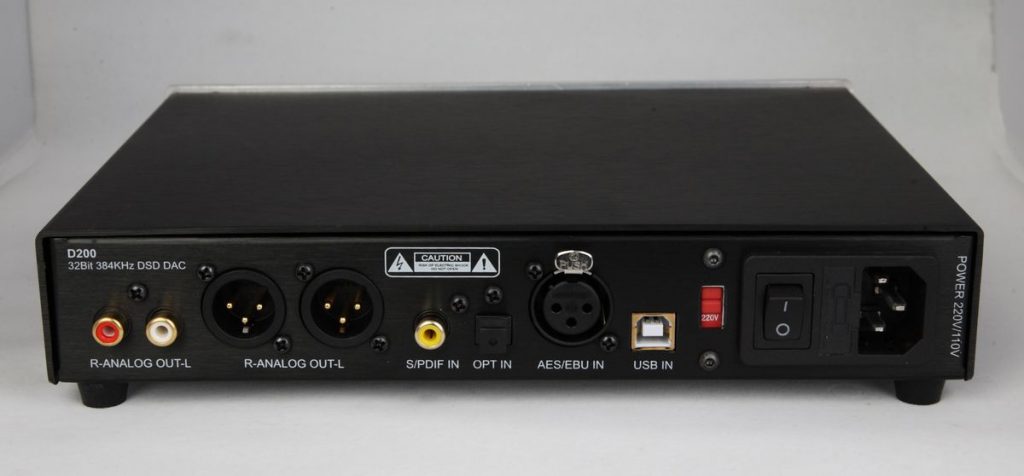
Personally, as much as I love the DA8, I think the D200 probably makes more sense. DA8 is almost too much DAC for a lot of users. What do most folks want? Good sound, lots of features, and solid build quality, all from a device they can afford. If someone wanted to build a reasonably nice system based around Sennheiser HD650 and maybe HiFiMAN HE-500, perhaps throwing in a nice set of active monitors for desktop use, the D200 makes perfect sense as the epicenter of that system. As good as the DA8 is, it’s somewhat wasted on that person unless they move upscale to better gear like HD800 and HE-6 – at which point they’d likely also want a top level dedicated headphone amp. That moves them into a price bracket which many people aren’t prepared to play in, one where $5k is easily exceeded if they aren’t careful. So the D200 makes a whole lot of sense in terms of balancing expenditures. But I’m getting ahead of myself here so allow me to be more specific.
GEAR
I had a minor hiccup when I first tried using the D200 with a Windows laptop over USB. I normally use a dedicated music server like the Aurender X100L. Sometimes I use a MacBook Pro with Audirvana+, but lately I’ve been trying to spend more time learning JRiver Media Center on Windows. So I tried that first. I installed the driver and launched JRiver only to get…. no sound. I switched to Foobar and got the same results. Puzzling. After giving it some thought, I realized I still had USB drivers installed from the last DAC I had used. I should have removed those from the start but the driverless nature of my MacBook and my various Linux music servers have me spoiled. Let this be a reminder – multiple drivers don’t always cause such obvious errors, but it’s nonetheless a good idea to keep the system cleaned up.
After removing everything and doing a fresh install of the proper drivers, it was smooth sailing. I figured it would be best to use price-appropriate gear in this evaluation, so I mostly stuck with my Alpha Dogs, Noble 4C CIEMs, Grado PS500, and Sennheiser HD650. I later added Yulong’s A28 balanced amp, and did lots of comparisons with the DA8 both cumulatively and as a pure DAC. Towards the end of my evaluation I let loose with some higher end gear just to see how the D200 could scale – I’m talking dual Questyle CMA800R monoblocks driving Sennheiser HD800, KGSShv electrostatic amp with Stax SR-007mkII and SR-4070, and Auralic Taurus driving Audeze LCD-3. We’ll see how well it holds up under the weight of thoroughly high-performance kit.
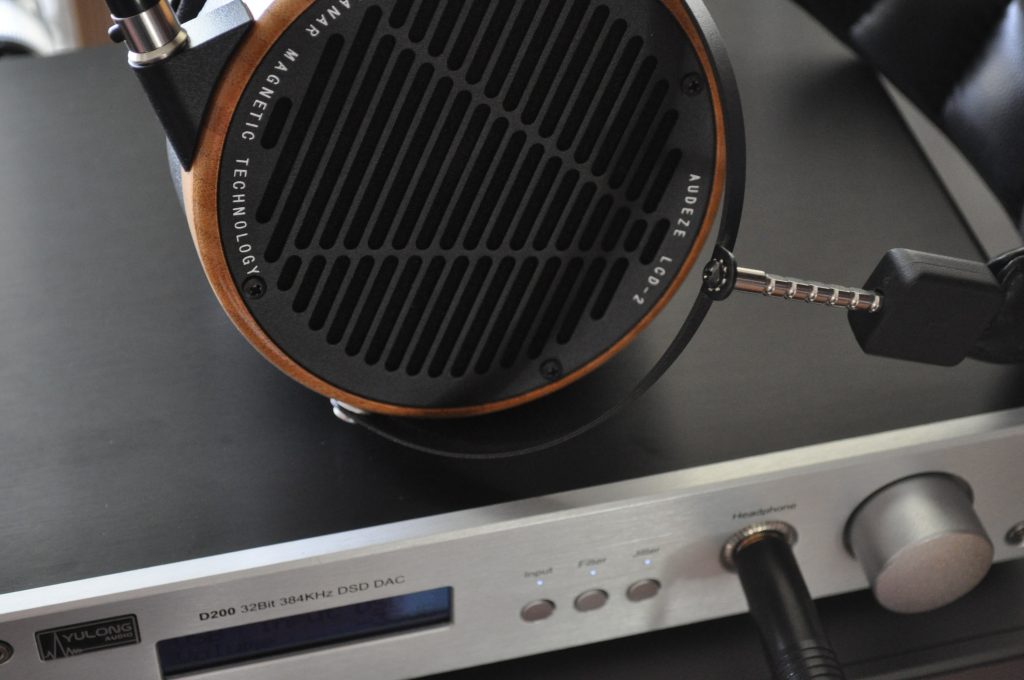
SOUND
The D200 impressed me right from the start by seemingly walking the line between the detail oriented D100 and the smoother, warmer DA8. The D100 could be somewhat analytical in the wrong system… it seemed fairly neutral for the most part, but when paired with an amp on the fast/detailed side (such as Yulong’s own A100 or the Firestone Audio Bobby) plus a headphone with a propensity for brightness (think HD800 or most of the woody models from Audio Technica) it could be too much of a good thing. Those favoring a meatier tonal richness have a blast with the DA8, but what about people seeking a nice balance between the two? That’s where D200 seems to fit right in.
Compared directly to the D100 mkII, I hear a distinct step up in resolution. No bones about it, the D200 is on another level compared to its predecessors. I hear deeper into the venue on the live tracks from Dengue Fever’s In the Lay Lines (B&W Society of Sound release), with an improved sense of space and “scale” for lack of a better term. 24-bit/48kHz releases are somewhat rare, but tracks like this show it to really be worthy of the “Hi-Res” label – assuming it was done right. I’ll take stuff like this any day of the week, over redbook albums upsampled to 24/192 and sold as genuine Hi-Res material (for high prices, no less).
I then tried a DSD version (SACD rip) of the Stuttgart Chamber Orchestra’s Die Rohre—The Tube and noticed more emphasis on leading edges, resulting in greater definition of plucked and bowed strings as compared to the older model. The D200 wasn’t quite as bold and dynamic as the DA8 with this same material but neither did it lag very far behind. And some systems might even do better with the D200, which seems slightly “faster” than the more expensive sibling. DA8 was smoother, more creamy and organic, while D200 was slightly more open sounding. System matching comes heavily into play and in this case is probably more important than mere price differences.

One area where D200 sounds distinctly closer to DA8 rather than D100 is the ability to handle complex arrangements. On the XRCD release of Unity by Ernie Watts, the D200 scaled to new heights when it came to unraveling multiple instruments simultaneously. The D100 always sounded perfectly fine in this area, so it’s the type of thing you don’t know you’re missing… until you hear something better. The D100 doesn’t stumble in an obvious fashion but once you hear the difference, it does seem a bit homogenized – particularly during complex percussion arrangements, or on “Tricotism” when the electric and acoustic bass play simultaneously (and exuberantly). If you only ever listen to straight forward rock music or more simple singer/songwriter fare, then this difference is less obvious. But fans of jazz, classical, and other layered/complex music should take note.
After much back and forth testing, I discovered I like the asynchronous USB input better than the other options. Not that legacy SPDIF sounds bad per se, just not quite as good as USB. It’s also more dependent upon transport quality, while USB pretty much always sounds the same whether I use my dedicated Aurender X100L server or a simple laptop. The D100 series had an asynchronous sample rate converter on board adjusting all incoming signals to a sample rate of 110kHz before handing off to the Analog Devices AD1955 DAC. I always figured the ASRC was a sort of equalizer bringing poor sources in line with great ones. With the switch to ESS Sabre technology the D200 handles things differently. Despite using the ESS “Patented Time Domain Jitter Eliminator” I still hear a difference when feeding coaxial SPDIF via cheap DVD player rather than my usual YBA Design WM202 or Audiophilleo 1 with PurePower. The lesser transport brings a smeared, indistinct sound, which frankly isn’t all that fun to listen to. In this way the D200 is not unlike Yulong’s own D18 which was known for being extremely picky about transport. The good news in all this? D200’s USB input is far more even handed and doesn’t really care how poor your laptop or desktop might be. Within reason, I’m sure.
Interestingly, Yulong gives us the “Jitter” button which allows us to deactivate the jitter reduction feature if we so desire. I still don’t notice any change when using USB but a really good SPDIF connection tends to sound better with the option disabled. For mediocre transports I leave it on. The sound can be further tweaked with the “Filter” button which cycles through several of the built-in ESS options. This makes a rather small difference (as DAC filter options tend to do) but is nonetheless worth messing with to customize your experience. I at times prefer the “slow” filter because it seems more forgiving on the top end. Other times I like “sharp” which has more definition and clarity. Again, definitely nothing like a night and day change…. more of a subtle nuance, the final piece of the puzzle that may tip the scales from almost there to just right.
Volume control is handled by the built-in implementation from the DAC chip itself. It’s got 80 steps at 1 decibel intervals. We do get the option of going “Pure DAC” mode, which disables volume control and turns off the headphone output as well. This is for use with an external headphone amp or maybe a speaker system that already has a preamp in it. I enjoyed using the device to drive the Adam Audio F5 active monitors and would have no issue using this as my go-to device handling the entire system. I thought it did a great job until volume dropped to very low levels (like -50dB or lower) at which point I could hear what sounded like a “softening” of the music, likely due to digital attenuation. This should not be a problem in most situations. Users with really high-end amps and speakers may still choose to include a dedicated preamp in the chain, as it still contributes to the overall sonic picture.
The onboard headphone amp is nearly identical to that of the DA8. Which means listening straight from the headphone jack sounds different between each device. Why? Because each amp, similar as it may be, is amplifying a very different sounding signal from the DAC section. Thus we get a warm and smooth top end on one hand, and a more neutral, linear presentation on the other. I have to applaud the D200 for having a completely silent, inky black background. This is an area that Yulong has struggled with to some degree on previous units, but it seems to be taken care of by now. Sensitive low impedance headphones and even IEMs are fair game here. The device puts out 1 full watt at 32 ohms so it’s fairly potent – it had plenty of drive with planar magnetic headphones like Audeze LCD-2 and HiFiMAN HE-500, though wasn’t as happy with the 600 ohm beyerdynamic T1. But for a do-everything solution I can happily recommend the D200. If you’re a serious headphone nut, you might eventually want to add a dedicated amp though.
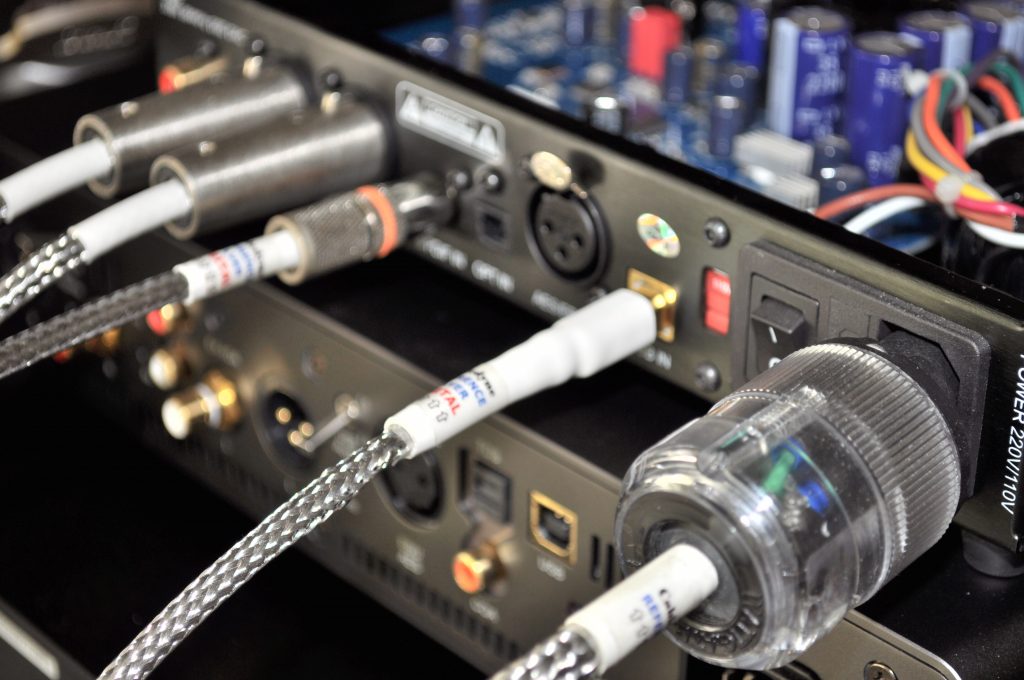
At which point I can also recommend the Yulong A28. While not quite a perfect aesthetic match (but close enough) the A28 pairs beautifully with the D200. Both are neutral and clear without being shouty, thin, annoying. The D200 offers true balanced outputs, so the full potential of the A28 can be unleashed. This combo, at $1400, drives even difficult cans like the notorious HiFiMAN HE-6 to very satisfying results. Does it compete with uber combos like the Auralic Taurus paired with matching Vega DAC? Nope. For roughly a quarter of the cost though, the Yulong duo gives a very fair account of itself as a value proposition.
One last interesting twist – Yulong allows the rear XLR outputs to actually drive headphones directly. Now, technically, this is something that could be done with any similar device that has volume control and XLR outputs. You’d find brave HeadFiers doing this back in the day with the Lavry and Benchmark DACs. In reality, those designers never really intended for their gear to be used in such a fashion. The problem has to do with output impedance, which on those models would increase or decrease along with volume. Maybe not a big deal driving an amplifier but for direct headphone connection? Not so good. Yulong claims a very low – and constant – output impedance for the D200 XLR outputs. This output is intended for higher impedance headphones like Sennheisers or beyerdynamics, preferably in the 300 ohm or above range. Different models will have different results but personally for low impedance stuff I stick with the headphone jack up front which delivers more current. And of course you’ll need an adapter to convert the rear XLR jacks into the proper format. I was only able to try this with HD650 and though it’s a somewhat limited impression, I do think it sounds a bit better than the dedicated headphone jack. At least for that particular headphone. The front panel jack is no slouch but the XLR connection seems more graceful and transparent, though perhaps a little less punchy in the lower registers. But I consider this as sort of a bonus feature anyway – it’s worth messing with if you want, but can be ignored if you don’t.
COMPARISONS
I’ve already discussed the D200 compared to its fellow Yulong models. That’s the easiest way to understand the device, as it sounds like a mix between the more clinical D100 models and the ultra-analog sounding DA8. However, not everyone has heard a Yulong DAC before. So a few mainstream comparisons are in order.
First off, I’ll say I absolutely prefer the D200 over the PS Audio NuWave ($999). That DAC sounds too edgy and bright for my taste. I sometimes hear complaints about the “Sabre” sound and how people find ESS-based DACs to be piercing in some cases. I don’t necessarily agree with that as a blanket statement but I certainly do know the feeling – I get it from the NuWave DAC. Funny thing is, the NuWave uses a Texas Instruments (aka Burr Brown) PCM1798 chip rather than any Sabre implementation. So I guess that theory is out the window for me. Regardless, I find the D200 to have superior sound in almost every way – the lower price and additional features are just icing on the cake. The PS Audio unit certainly looks the part, and the name is definitely more prestigious, but that’s where the advantages end as far as I’m concerned.
Another comparison is the Audiolab M DAC which is another compact device packing Sabre technology. The M DAC goes for around $900 and is theoretically a good competitor for D200 since it has most of the same features. I like the M DAC more than the NuWave, but still prefer the “soul” of the D200 which the Audiolab unit lacks to some extent. They both do an impressive job of digging out low level detail but the Chinese device surpasses its British counterpart when it comes to swing factor, PRaT, or whatever term we want to use. Both sound equally beguiling on Home by Jane Monheit, adequately capturing her silky voice along with the well recorded piano, trumpet, and brush work typical of the genre. But play Samuel Yirga’s The Habasha Sessions, or Idris Mohammad’s Power of Soul, and the D200 more adequately follows the groove. Maybe it’s a low frequency thing, though in isolation the M DAC doesn’t seem particularly lacking in that area. Whatever it is, I always find myself tailoring the playlist towards the M DAC’s strengths, while the D200 can handle pretty much anything that comes up. That makes it a great option for people who – like me – enjoy a very wide range of musical influences.
The D200 is not limited to acting as a mid-priced all-in-one. I used it to feed dual Questyle CMA800R monoblocks driving an HD800, and even threw it in my electrostatic rig using the KGSShv and Stax SR-4070/SR-007 mkII. As a $699 unit, it didn’t keep up with my reference – the Resonessence Labs Invicta Mirus – but given the significant price discrepancy I wouldn’t expect it to. Regardless, it gave a solid performance without any major flaws to speak of. Weaknesses were subtractive rather than glaring, which is always a good thing. Ultimately I think a user who starts with the D200 as their main device could keep it around for quite some time before it became a bottleneck. That makes the price increase from the D100 a bit more palatable.
CONCLUSION
It seems like I’ve said this at least once before, but here goes: Yulong has done it again. They surpassed their prior offering in this segment by a reasonably large margin, enough to keep themselves relevant for years to come. The DAC market is ever changing and companies cannot remain stagnant – a full featured DAC from a few years back is nearly out of date by today’s standards. In light of that, I’m pleased to see Yulong keep on top of things so well. This is not an upgrade for upgrade’s sake – it’s an evolution of the reasonably affordable, do-everything component that made Yulong popular in the first place. If you find yourself contemplating a more expensive purchase from the likes of Audiolab or even Mytek, I urge you to find some way of trying out the Yulong D200 prior. To my ears it makes a worthy alternative for significantly less money.















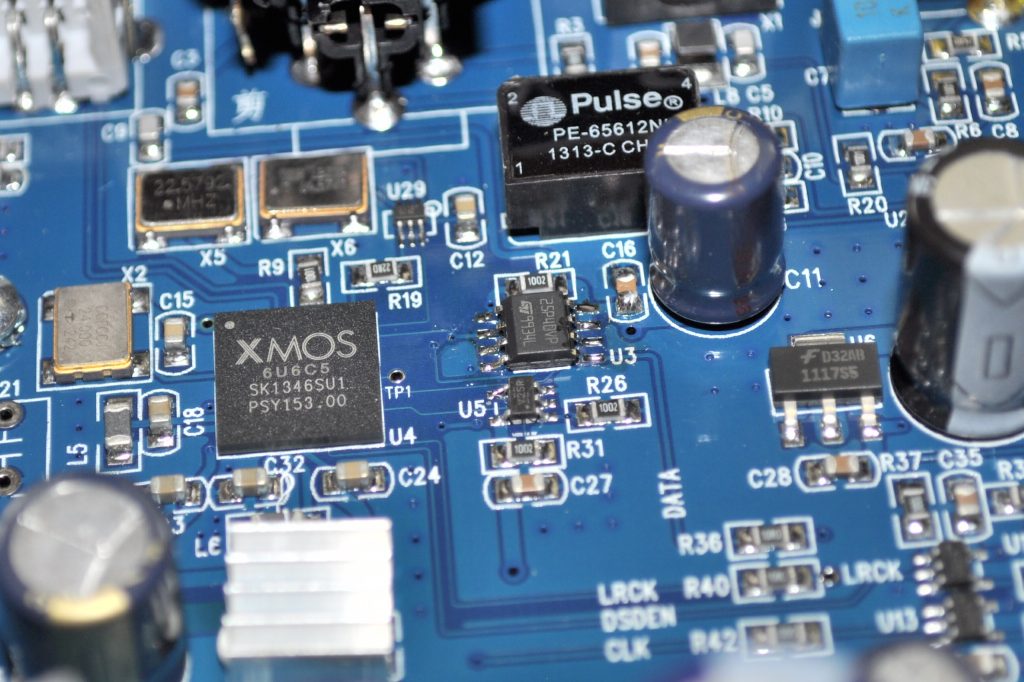
Reply
Reply
Reply
Reply
Reply
Reply
Reply
Reply
Reply
Reply
Want to join discussion?
Feel free to contribute!